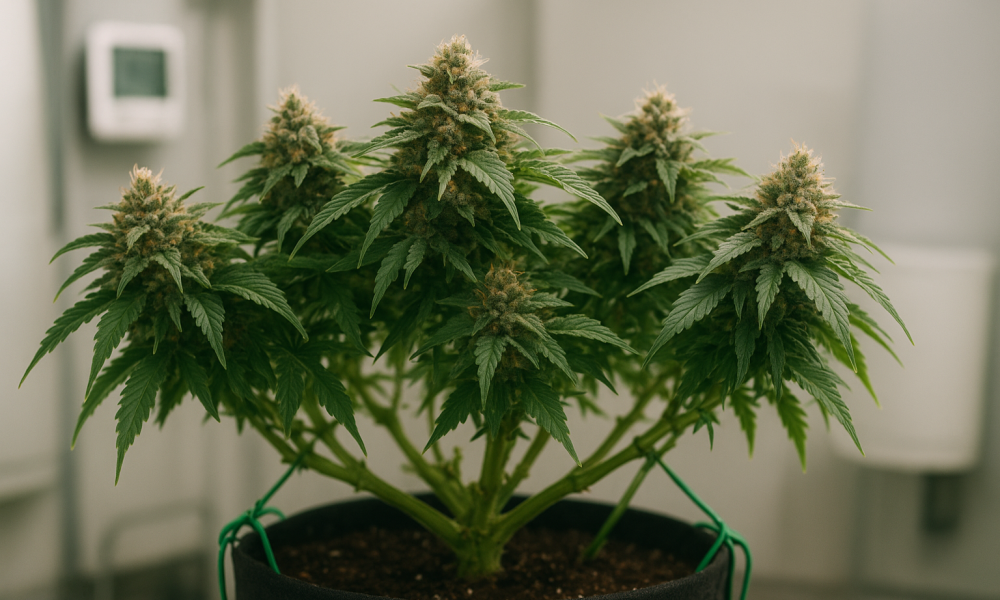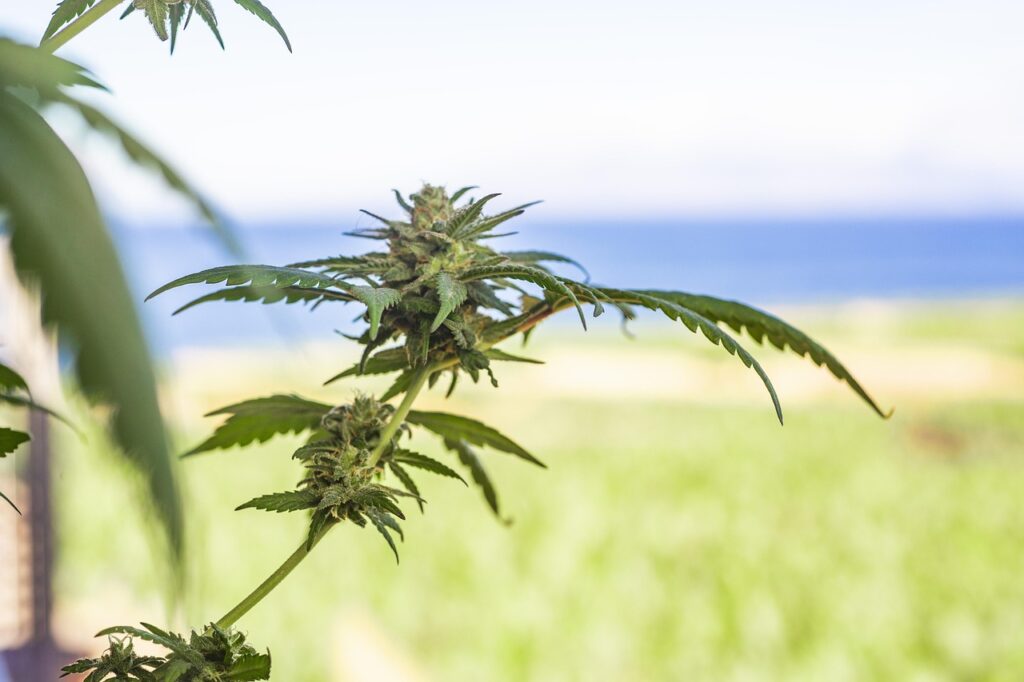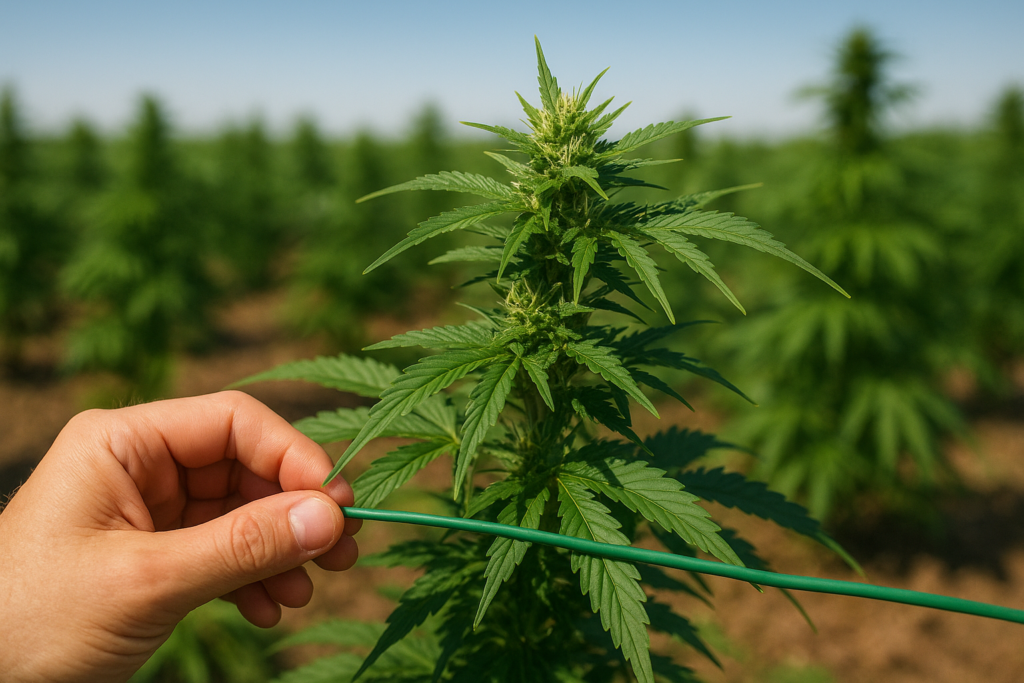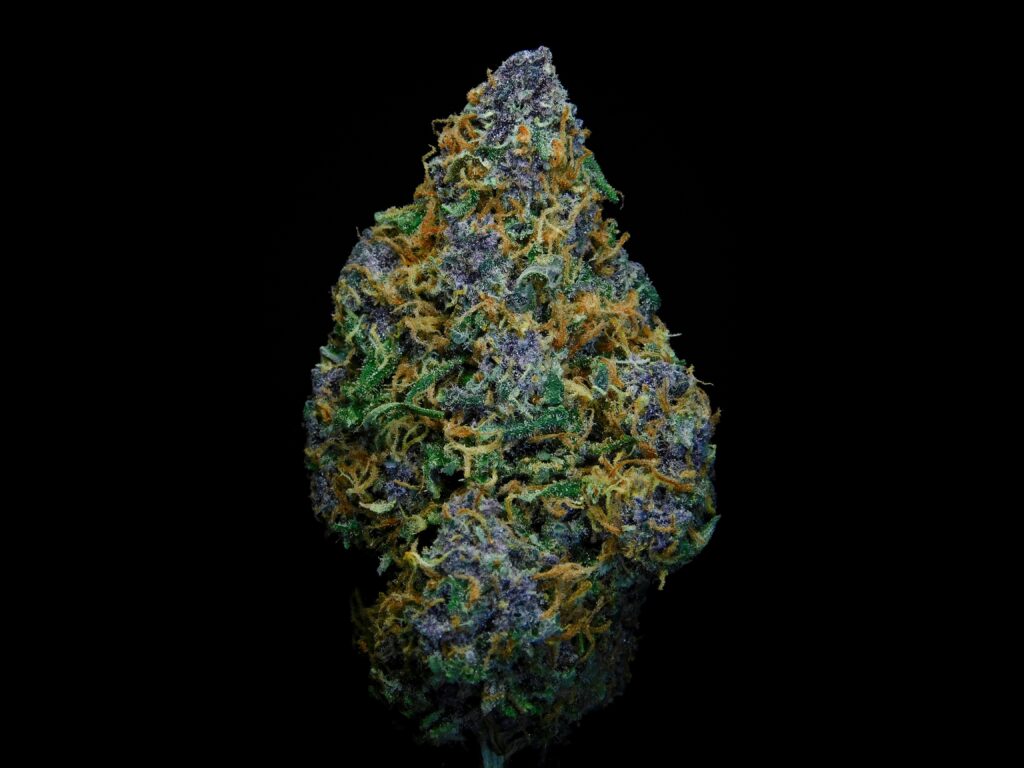What Is Low-Stress Training (LST) and How Does It Improve Cannabis Yield and THC Levels?

Understanding Low-Stress Training (LST) in Cannabis Cultivation
If you’ve ever seen a cannabis plant grow tall and lanky with one big main cola, you might think it’s doing well. But here’s the catch: cannabis naturally grows in a Christmas-tree shape, with one dominant bud at the top soaking up most of the light. The side branches often stay shaded, underdeveloped, and underproductive. That’s where Low-Stress Training (LST) steps in—it’s a grower’s secret weapon for maximizing every single inch of the plant.
LST is exactly what it sounds like: gently training your plant into a more even, horizontal shape without causing heavy stress or damage. Unlike high-stress methods like topping (where you cut the plant), LST involves bending and tying branches so that light can hit more bud sites. Think of it as teaching your plant yoga—it stays relaxed, flexible, and ultimately stronger.
The roots of this technique (pun intended) trace back to traditional horticulture. Gardeners have used plant training methods for centuries to boost fruit harvests in apples, grapes, and tomatoes. Cannabis growers adopted and refined it for their own leafy treasure. Modern grow science now confirms what early growers suspected: spreading the canopy not only increases flower production but can also enhance cannabinoid and terpene profiles, making buds both bigger and more potent.
According to a 2020 study in Frontiers in Plant Science, canopy management techniques like LST allow for more uniform photosynthesis, reducing wasted energy and boosting total biomass. In cannabis terms: more bud weight, denser trichomes, and higher THC percentages.
Now let’s be real—whether you’re a hobby grower with three plants in your closet or a commercial cultivator managing hundreds, understanding LST is like upgrading from a flip phone to a smartphone. It changes everything about how you see your plant’s potential.
Why Growers Use LST?

At first glance, LST might look like just bending a plant for fun. But the science behind it is surprisingly deep—and the benefits go far beyond bigger yields.
Here’s why growers swear by it:
- Increased Yield
By redistributing light across multiple bud sites, growers often report yield increases of 20–30% compared to untrained plants. That’s like turning a single 5-ounce harvest into 6 or even 7 ounces—without any extra grow space. - Higher Potency
Stress signals in plants often trigger secondary metabolite production. For cannabis, that means more cannabinoids like THC and more aromatic terpenes, especially when paired with other techniques like flash-freezing cannabis for live resin extraction. - Better Terpene Expression
With more light and airflow, terpene production flourishes. That translates into richer aromas, tastier smoke, and stronger entourage effect when consumed in high terpene extracts (HTE) or full-spectrum concentrates. - Stealth and Space Management:
Outdoor growers love LST because it keeps plants shorter and bushier, avoiding unwanted attention while still producing heavy harvests. Indoor growers benefit by keeping plants closer to their light source without risking burn. - Stronger Plants:
A well-trained cannabis plant distributes energy evenly, resulting in sturdier branches that can hold up heavier buds without snapping.
A case study published by Cannabis Business Times in 2021 compared untrained plants with LST-managed plants across a 10-plant indoor grow. The LST group not only produced more biomass but also tested nearly 1.8% higher in THC concentration on average. That might not sound like much, but when consumers are hunting for the best concentrate 2025, every percentage point counts.
So, whether you’re focused on live resin vs shatter debates, trying to produce full-spectrum cannabis extracts, or just want more bang for your buck, LST sets the foundation for high-quality flower that turns into even higher-quality concentrates.
How Does LST Work on Cannabis Plants?
Now comes the fun part: what’s happening under the hood when you bend those branches?
Plants grow thanks to a hormone called auxin, which promotes upward growth. Normally, auxin pools in the top cola, making it the boss of the plant (this is called apical dominance). That’s why cannabis naturally grows into a Christmas tree shape.
When you bend the main stem sideways with LST, you redistribute auxin across multiple bud sites. Suddenly, the plant realizes: “Hey, those side branches could be leaders too!” The result? Multiple colas rise to the top, instead of just one.
Here’s how it improves performance:
- Light Penetration: By spreading the canopy flat, light reaches more leaves and bud sites. More photosynthesis = more sugars = fatter buds.
- Airflow: Better spacing between branches reduces moisture buildup, lowering the risk of mold or powdery mildew.
- Energy Efficiency: Instead of one cola hogging resources, nutrients flow more evenly. Imagine sharing pizza slices fairly instead of one kid taking the whole pie.
- Trichome Production: According to Journal of Experimental Botany (2019), mechanical training can stimulate stress-response pathways that enhance trichome density. In cannabis, trichomes = cannabinoids + terpenes.
If you’ve ever wondered why live resin vs distillate debates always favor live resin for flavor—it’s because resin is packed with those terpene-rich trichomes. LST helps you grow flower that’s perfect for extraction into high terpene extracts (HTE) or full-spectrum concentrates.
So yes, LST isn’t just about “more buds”—it’s about creating better buds, primed for both smoking and advanced cannabis extraction techniques.
Step-by-Step Guide: Applying LST to Your Cannabis Plant

Alright, let’s get practical. If you’re ready to try LST, here’s a friendly step-by-step that works for both beginners and seasoned pros:
- Start Early: Begin training when your plant has 4–6 nodes (around week 3–4 of veg). The stems are flexible and less likely to snap.
- Choose Your Anchor: Use soft plant ties, garden wire, or even pipe cleaners. Avoid hard plastic or string that can cut into the stem.
- Bend Gently: Pull the main stem sideways until it’s roughly horizontal. Secure it loosely to the pot rim.
- Spread the Canopy: As new shoots grow upward, bend and tie them outward too. Think of building a “wheel” shape with the stem as the hub.
- Adjust Regularly: Check daily. As the plant grows, keep adjusting ties so all tops stay even with each other.
- Combine with Defoliation: If big fan leaves block bud sites, carefully remove them. This increases light penetration even more.
- Flower Transition: Continue light training into the first 2 weeks of flowering (the stretch phase). After that, let the plant focus energy on fattening buds.
⚡ Pro Tip: Use fabric pots with holes around the rim—it makes anchoring ties way easier.
Real-world growers often combine LST with screen of green (ScrOG) setups, weaving branches through a net for maximum canopy control. One commercial grower in Oregon reported that his ScrOG + LST setup boosted yields by 35% per square foot compared to untrained controls.
Common Mistakes in LST and How to Avoid Them
LST sounds easy, but mistakes happen. Luckily, most are preventable with a little know-how.
Mistake 1: Snapping a Branch
If you bend too fast or too hard, stems can break. Solution: go slow, bend gradually, and if you do snap, tape the branch with plant tape—it often heals!
Mistake 2: Over-tight Ties
Too-tight ties can choke stems, restricting nutrient flow. Always leave slack for growth and check ties weekly.
Mistake 3: Ignoring Recovery Time
Even low-stress methods need time. Don’t over-bend daily; give plants a chance to adjust.
Mistake 4: Forgetting Light Distance
A flat canopy means colas are closer to your grow light. Adjust height to avoid light burn.
Mistake 5: Neglecting Airflow
More foliage spread out = higher humidity. Add fans to prevent mold issues.
Think of it like dog training: you want consistency and patience, not harsh corrections. Done right, LST keeps plants happy while shaping them into bud-producing machines.
LST or Other Training Methods? Which Is Better for YOU?
There’s no one-size-fits-all in cannabis training. Each method has its own strengths, risks, and best-use cases. Here’s how they stack up against each other:
LST (Low-Stress Training)
Minimal stress since no cutting is involved—plants are bent and tied. Typically produces 25–40 % higher yields than untrained plants by improving light distribution. Potency gain is mild but buds are more uniform. Risk is very low, making it suitable for autoflowers and new growers. Side-by-side, LST shines for beginners and pros alike. It’s low risk, high reward, and works on nearly every strain. For extractors, it also creates denser, more resinous buds—ideal for making live resin, distillate, or full-spectrum concentrates.
Topping (High-Stress)
Cutting the main cola to create multiple tops. Effective but slows growth recovery by 5–7 days. This is a moderate to high stress technique since the apical growth tip is cut. It increases branching and potential yield by about 30–50 %, but requires recovery time. Potency increase is moderate. Risk is moderate—plants may stunt if done incorrectly or too late.
FIM (“F I Missed”)
A less precise topping cut. Creates multiple tops but also stresses plants. Like topping, it belongs to the higher stress category and requires skill to avoid setbacks.
Supercropping
Pinching stems to damage tissue, forcing stronger growth. A high-stress method where stems are pinched and bent. Can increase yield by 40–60 % and stimulate noticeable resin production due to stress response. Useful, but high-risk. This method is better suited for experienced growers.
Screen of Green (ScrOG)
Training through a net, usually combined with LST. A canopy training method that uses a net to spread plants horizontally. Stress level is low to moderate. Yields often improve by 35–55 % thanks to optimized light exposure. Potency effects are moderate due to consistent bud development. Risk is moderate because it requires setup and ongoing adjustments. Excellent for indoor grows.
Sea of Green (SOG)
Many small plants with minimal training. Good for fast turnover but less per-plant yield. This technique emphasizes quantity and speed over individual plant optimization.
Comparison of Cannabis Training Methods
| Training Method | Stress Level | Yield Increase | Potency Impact | Risk / Difficulty | Notes |
| LST (Low-Stress Training) | Very Low | +25–40 % | Slight gain | Very Low | Gentle bending, creates an even canopy, highly beginner-friendly. |
| Topping / FIM | Moderate–High | +30–50 % | Moderate | Moderate | Cutting the apical dominance to form multiple colas; requires recovery time (5–7 days). |
| Supercropping | High | +40–60 % | Noticeable | High | Stem damage to strengthen growth; enhances resin production but risky. |
| Scrog (Screen of Green) | Low–Moderate | +35–55 % | Moderate | Moderate | Training with a screen to maximize light exposure; excellent for indoor grows. |
What to Expect from LST in Cannabis Harvests
So what’s the payoff? If you commit to LST, here’s what you can realistically expect:
- Yield: On average, 20–30% higher than untrained plants. In commercial settings, that can mean thousands of dollars more per harvest.
- Potency: Modest but meaningful boosts in THC and terpene levels. Perfect for producing best concentrate 2025 candidates.
- Quality: Denser, more aromatic buds with stronger flavors and smoother smoke.
- Consistency: Plants look more uniform, making harvest and trimming easier.
One grower in Colorado shared that his Gorilla Glue plants, when untrained, averaged 22% THC. With LST, the same genetics averaged 23.6% THC and 15% more terpene content, leading to concentrates with richer flavor profiles and a more intense entourage effect.
For home growers, the reward is simple: more jars filled with top-shelf buds. For commercial cultivators, the reward is stronger market demand and premium concentrate potential.

10 Key Cannabis Cultivation Terms You Should Know
- Apical Dominance – The natural growth tendency of a plant to focus energy on its top cola.
- Auxin – A plant hormone responsible for vertical growth, redistributed during LST.
- Canopy – The top layer of leaves and buds in a cannabis plant.
- Node – The point on a stem where leaves and branches grow.
- Cola – A cluster of cannabis buds growing tightly together.
- ScrOG (Screen of Green) – Training method using a mesh screen to spread plants horizontally.
- Trichomes – Resin glands on cannabis flowers that produce cannabinoids and terpenes.
- Entourage Effect – The synergistic effect of cannabinoids and terpenes working together.
- High Terpene Extract (HTE) – A cannabis extract preserving maximum terpenes for flavor.
- Full-Spectrum Concentrate – An extract that retains the plant’s entire cannabinoid and terpene profile.
🌿 Ready to take your grow (or your wholesale shelves) to the next level? Visit our Shop page to connect with the top-quality cannabis companies and source genetics, flower, and extracts trusted by professionals worldwide. Don’t just grow—grow smarter with LST-backed harvests.
💬 And now, we’d love to hear from you:
Have you tried Low-Stress Training in your own grow? What kind of results did you get—bigger buds, stronger terps, or maybe both? Drop a comment below and share your experience!
